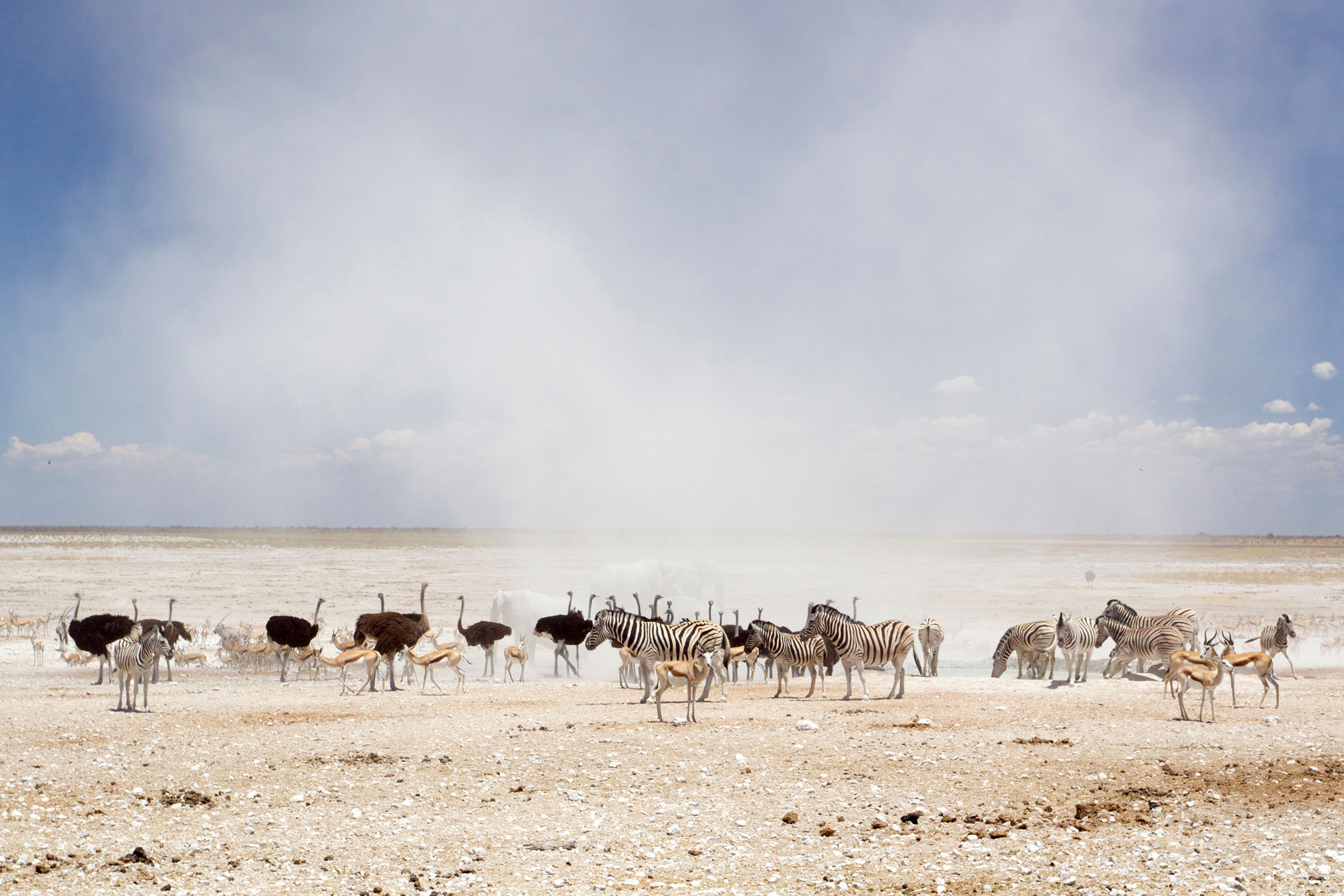Etosha National Park
Etosha National Park is a one of the largest national parks in Africa. It was proclaimed a game reserve in March 1907 by Governor of German South West Africa, Friedrich von Lindequist. It was awarded the status of national park in 1967 by virtue of an act of parliament of the Republic of South Africa. It spans an area of 22,270 Square Kilometers and was named after the large Etosha pan which is almost entirely within the park. The Etosha National Park is one of Namibia’s most visited destinations attracting thousands of travelling individuals every year both local and international. Areas north of the Etosha pan were inhabited by Ovambo people, while various Otjiherero-speaking groups lived immediately outside the current park boundaries. The areas inside the park close to the Etosha pan were inhabited by Khoisan-speaking Hai//om people. The salt pans are by far the most noticeable geographical features in the National Park. The main depression covers an area of about 5,000 square kilometers and is roughly 130 km long and as wide as 50 km in some places. The hypersaline conditions of the pan limit the species that can permanently inhabit it. Occurrences of extremophile micro-organisms are present, which can tolerate these conditions. The salt pan is usually dry, but fills with water briefly in summer which is the rainy season here in Namibia. In the dry season, winds blowing across the salt pan pick up saline dust and carry it across the country and out over the southern Atlantic Ocean. The Etosha National Park has a savanna desert climate and the annual mean average temperature is 24 °C (75 °F). In winter, the mean night time lows are around 10 °C (50 °F), while in summer temperatures often hover around 40 °C (104 °F). As it is a desert, there is a large variation between day and night. Opening times for the park vary based on the sunrise and sunset. It is a safe assumption to plan on a half-hour before sunset or sunrise for both entering and exiting. When entering the park, all gates have the exact opening and closing times displayed. The national park has four entrances. The Anderssons Gate on the Southern Boundary, the Von Lindequist gate on the Eastern boundary. The Galton gate which is the most remote entrance to the park and is great for those traveling from Damaraland or the Skeleton Coast as well as the King Nehale Lya Mpingana gate which is located close to the town of Ondangwa. The best time to visit Etosha is in the dry season. The temperatures are cooler and the animals are more densely populated. This allows for the some of the best wildlife viewing. The dry season is from May to October which is winter in Namibia. Popular camps and lodges are often fully during this time, so it is advisable to book in advance with Essence Lifestyle and we’ll ensure you do not miss out on the action.
What to expect? You can expect a classic safari experience whilst staying at Etosha National Park, the wide variety of animal species (at least 144) and the well-maintained gravel roads within the national park do make for hassle free game viewing, ideal for family and friends.

